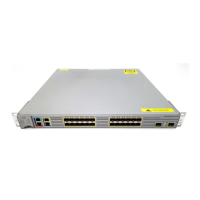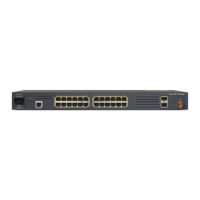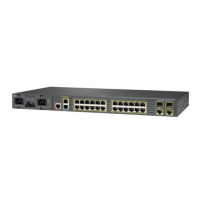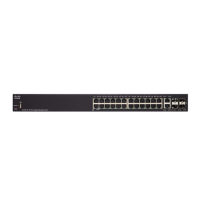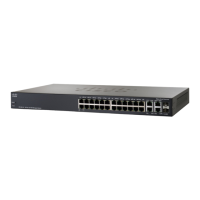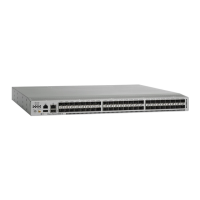29-62
Cisco ME 3800X and 3600X Switch Software Configuration Guide
OL-23400-01
Chapter 29 Configuring IP Unicast Routing
Configuring ISO CLNS Routing
Configuring IS-IS Dynamic Routing
IS-IS is an ISO dynamic routing protocol. Enabling IS-IS requires that you create an IS-IS routing
process and assign it to a specific interface, rather than to a network. You can specify more than one IS-IS
routing process per Layer 3 switch or router by using the multiarea IS-IS configuration syntax. You then
configure the parameters for each instance of the IS-IS routing process.
Small IS-IS networks are built as a single area that includes all the routers in the network. As the network
grows larger, it is usually reorganized into a backbone area made up of the connected set of all Level 2
routers from all areas, which is in turn connected to local areas. Within a local area, routers know how
to reach all system IDs. Between areas, routers know how to reach the backbone, and the backbone
routers know how to reach other areas.
Routers establish Level 1 adjacencies to perform routing within a local area (station routing). Routers
establish Level 2 adjacencies to perform routing between Level 1 areas (area routing).
A single Cisco router can participate in routing in up to 29 areas and can perform Level 2 routing in the
backbone. In general, each routing process corresponds to an area. By default, the first instance of the
routing process configured performs both Level 1and Level 2 routing. You can configure additional
router instances, which are automatically treated as Level 1 areas. You must configure the parameters
for each instance of the IS-IS routing process individually.
For IS-IS multiarea routing, you can configure only one process to perform Level 2 routing, although
you can define up to 29 Level 1 areas for each Cisco unit. If Level 2 routing is configured on any process,
all additional processes are automatically configured as Level 1. You can configure this process to
perform Level 1 routing at the same time. If Level 2 routing is not desired for a router instance, remove
the Level 2 capability using the is-type global configuration command. Use the is-type command also
to configure a different router instance as a Level 2 router.
Note For more detailed information about IS-IS, see the “IP Routing Protocols” chapter of the Cisco IOS IP
Configuration Guide, Release 12.2. For complete syntax and usage information for the commands used
in this section, see the Cisco IOS IP Command Reference, Release 12.2.
This section briefly describes how to configure IS-IS routing. It includes this information:
• Default IS-IS Configuration, page 29-62
• Nonstop Forwarding Awareness, page 29-63
• Configuring IS-IS Global Parameters, page 29-65
• Configuring IS-IS Interface Parameters, page 29-68
Default IS-IS Configuration
Table 29-12 Default IS-IS Configuration
Feature Default Setting
Ignore link-state PDU (LSP) errors Enabled.
IS-IS type Conventional IS-IS: the router acts as both a Level 1 (station) and a Level 2
(area) router.
Multiarea IS-IS: the first instance of the IS-IS routing process is a Level 1-2
router. Remaining instances are Level 1 routers.
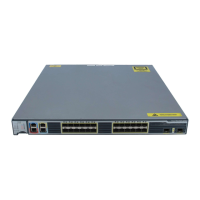
